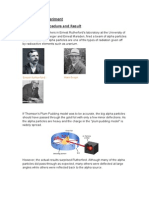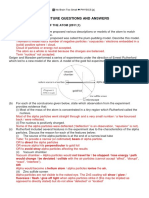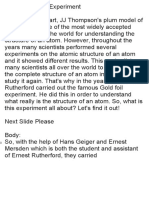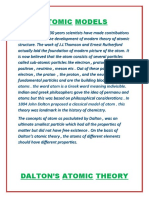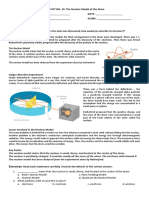0% found this document useful (0 votes)
13 views2 pagesRF Model
The Rutherford model of the atom reveals that it has a small, dense nucleus containing protons and almost all its mass, with negatively charged electrons orbiting around it. This model was established through the Gold Foil Experiment, which showed unexpected deflections of alpha particles, leading to the conclusion of a dense atomic center. It marked a significant shift from the 'plum pudding' model to a more accurate representation of atomic structure, paving the way for advancements in quantum mechanics.
Uploaded by
rahid1.5bCopyright
© © All Rights Reserved
We take content rights seriously. If you suspect this is your content, claim it here.
Available Formats
Download as PDF, TXT or read online on Scribd
0% found this document useful (0 votes)
13 views2 pagesRF Model
The Rutherford model of the atom reveals that it has a small, dense nucleus containing protons and almost all its mass, with negatively charged electrons orbiting around it. This model was established through the Gold Foil Experiment, which showed unexpected deflections of alpha particles, leading to the conclusion of a dense atomic center. It marked a significant shift from the 'plum pudding' model to a more accurate representation of atomic structure, paving the way for advancements in quantum mechanics.
Uploaded by
rahid1.5bCopyright
© © All Rights Reserved
We take content rights seriously. If you suspect this is your content, claim it here.
Available Formats
Download as PDF, TXT or read online on Scribd
/ 2








